What to expect

Gyeongbokgung Palace
Witness Korea's royal heritage come vibrantly to life as you explore the majestic Gyeongbokgung Palace.
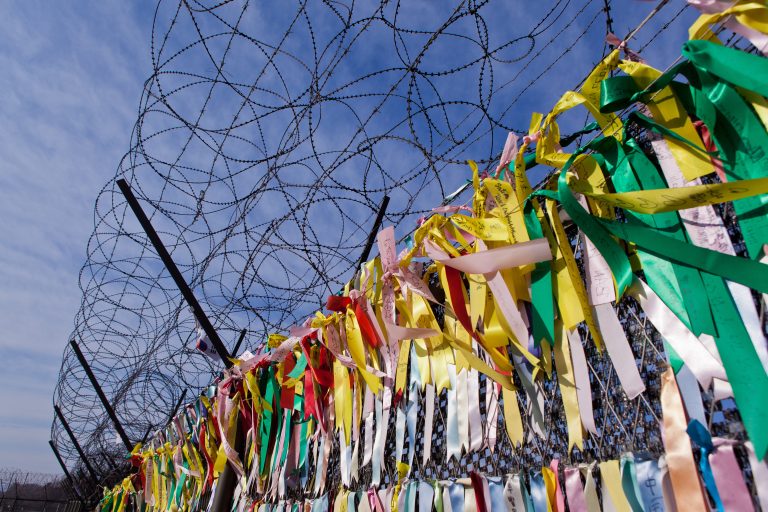
DMZ Zone Visit
Gain a profound and unique perspective with a guided visit to the Demilitarized Zone (DMZ).
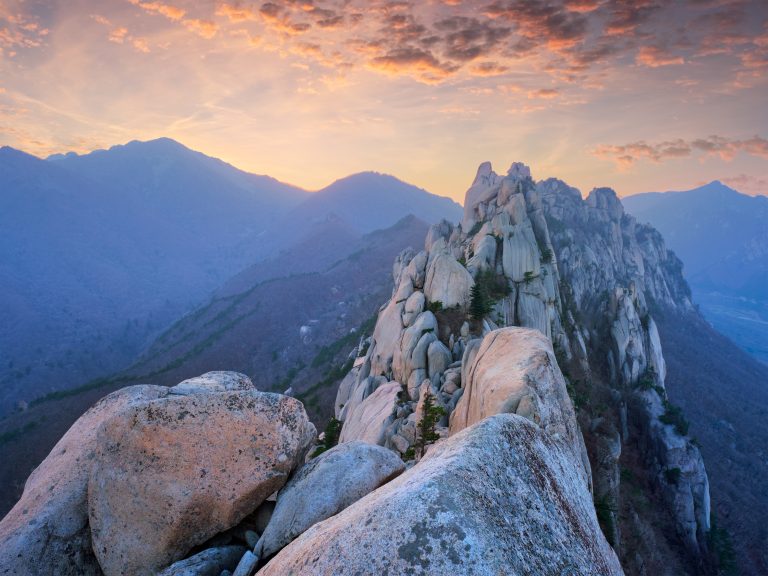
Seoraksan National Park
Discover the breathtaking natural beauty of Seoraksan National Park, exploring Korea’s stunning natural reserve.

Korean Cooking Class
About this trip...
Return airport transfers
Private Room
Breakfast daily and 2 Dinners
English Speaking Guides
Kwongeumseong Cable Car
Transfers by Private Coach and KTX Bullet Train
Gyeongbok Palace
Korean Cooking Class
DMZ Tour
Visit to Ojukheon Confucian scholar house
Hachuri Village Korean iron pot 'Gamasot' experience
Andong Hahoe Village
Visit to Tumuli Park
N Seoul Tower observatory entry
Accompanying Solos Tour Leader
- International flights not included. Let us help you book them! Learn more.
- Travel insurance
- Tips & drinks
- Meals when not included in the itinerary
- Activities when not included in the itinerary
- Arrival in Seoul
- Historic Highlights of Seoul
- DMZ Excursion
- Cultural Immersion in the Countryside
- Natural Beauty of Mt. Seorak
- Confucian Wisdom & UNESCO Heritage
- Timeless Beauty of Gyeongju
- Temples and National Treasures
- Monasteries & Beaches
- Vibrant Busan Adventures
- Cooking & High-Speed Rail to Seoul
- Seoul’s Modern Icons & Farewell
- Departure from Korea
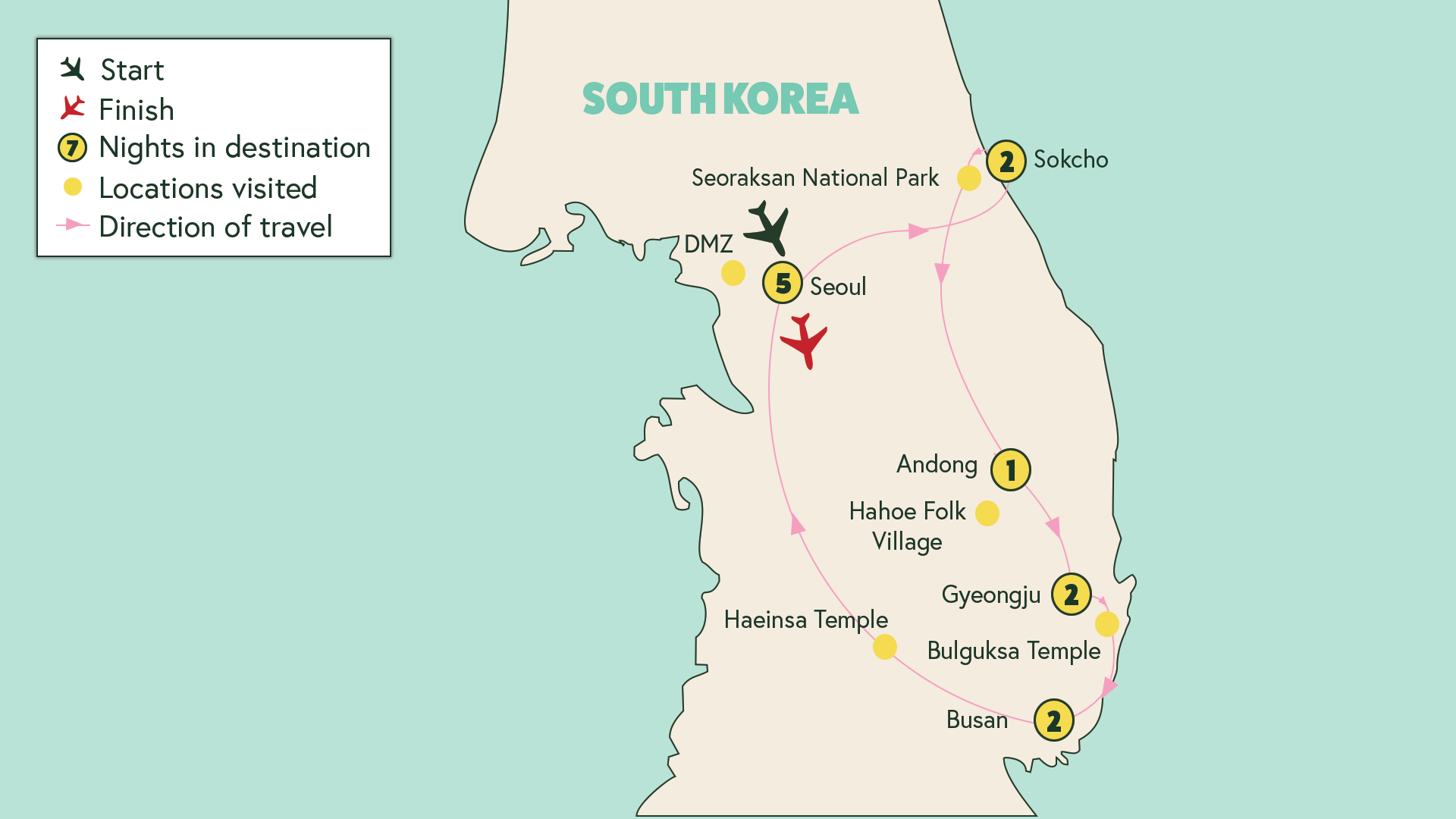
What you’ll be doing
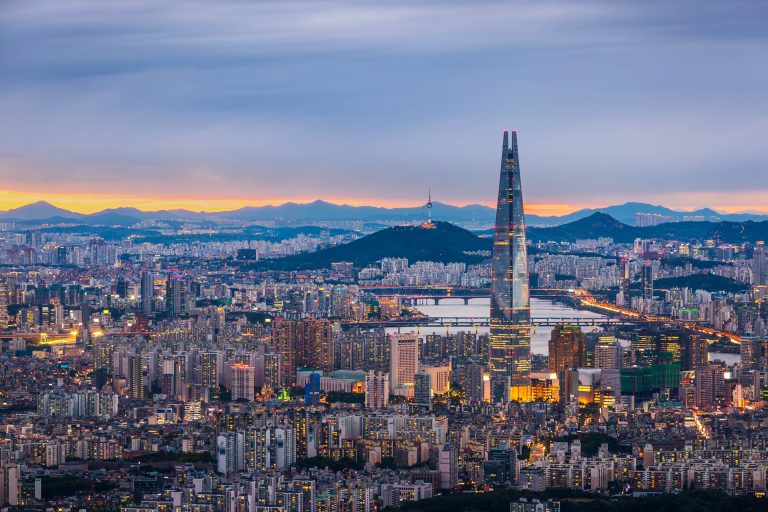
Day One: Arrival in Seoul
- Dinner Included

Day Two: Historic Highlights of Seoul
- Breakfast Included
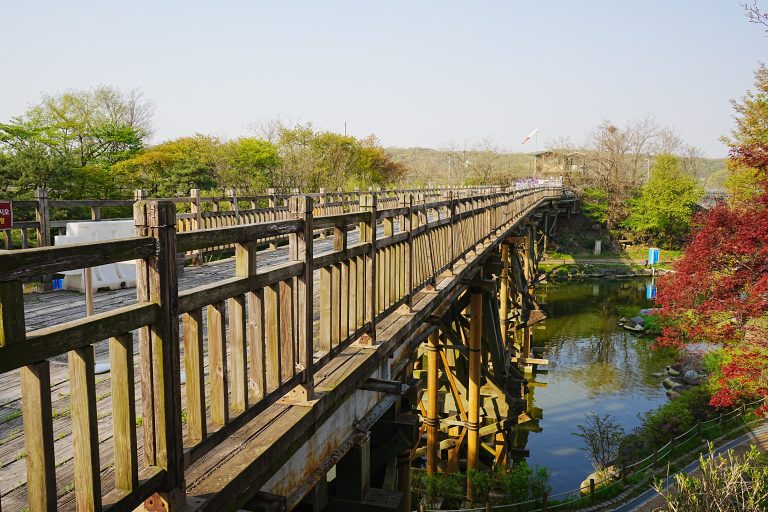
Day Three: Demilitarized Zone Excursion
Today offers a rare opportunity to explore the Demilitarized Zone (DMZ), a place of geopolitical tension and deep historical significance. Begin at Imjingak Park, a site built to console families separated by the Korean War, and walk across the Freedom Bridge, once used by repatriated prisoners of war. Descend into the 3rd Infiltration Tunnel, secretly built by North Korea and discovered in 1978, which you’ll access via a steep underground passage. Watch an educational film at the DMZ Theater and explore interactive exhibits at the Exhibition Hall. Head to the Dora Observatory, where you can peer into North Korea through binoculars on a clear day. Drive past the symbolic Unification Village on your way back to Seoul. Return to your hotel, reflecting on this unique insight into Korea’s divided past.
- Breakfast Included
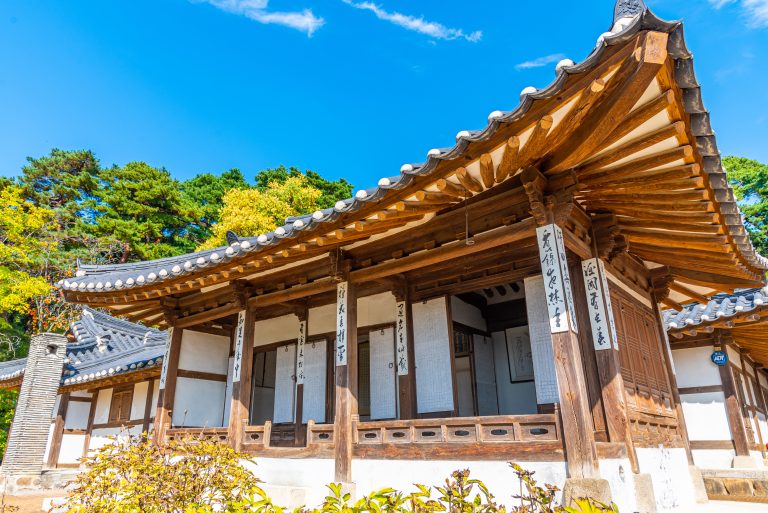
Day Four: Cultural Immersion in the Countryside
After breakfast and check-out, we head east to Hachuri Village, where we take part in a hands-on experience using a traditional Korean iron pot, known as a gamasot, for communal cooking. This interactive visit offers us a taste of rural life and insight into Korean food traditions.
We continue our scenic drive along Hangyeryeong Road, enjoying stunning views of forested valleys and mountain peaks. In Gangneung, we visit Ojukheon, the preserved home of Korea’s most respected Confucian scholar, Yulgok Yi I, and his mother Shin Saimdang—both national icons. The house, one of the oldest wooden structures in Korea, gives us a window into Joseon-era scholarly life.
Before arriving in Sokcho, we make a stop at the Money Museum, where we explore the history of currency in Korea and beyond through engaging exhibits and rare collections. This unique museum offers us insight into Korea’s economic history and the cultural significance of money.
In the late afternoon, we arrive in Sokcho, a coastal town bordering Seoraksan National Park. After checking in, the evening is ours to enjoy at leisure.
- Breakfast Included
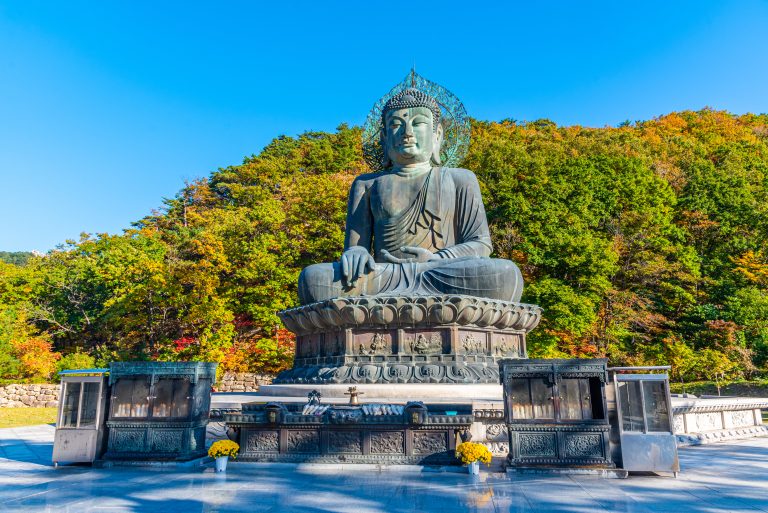
Day Five: Natural Beauty of Mt. Seorak
Today, we explore Seoraksan National Park, a UNESCO Biosphere Reserve known for its dramatic peaks, dense forests, and seasonal beauty. We begin with a cable car ride up to Gwongeumseong Fortress, where a short walk rewards us with sweeping mountain and coastal views.
Back at the base, we visit the tranquil Sinheungsa Temple, home to the towering Great Bronze Buddha and rich in Korean Buddhist tradition. We stroll the temple grounds, taking in the peaceful atmosphere and forested surroundings.
In the late afternoon, we return to Sokcho for some leisure time. The evening is free to relax, explore the town, or enjoy the seaside air.
- Breakfast Included

Day Six: Confucian Wisdom & UNESCO Heritage
Check out of your hotel and travel to Andong, the spiritual heart of Korea’s Confucian tradition. Visit the Hahoe Folk Village, a UNESCO World Heritage Site with over 600 years of preserved architecture and customs. Stroll along quiet lanes lined with thatched-roof houses and interact with residents who still live according to ancestral ways. Later, explore Dosanseowon Confucian Academy, established in 1574 in honor of the scholar Yi Hwang. Walk through lecture halls and dormitories where Korea’s brightest minds once studied. Gain insight into the philosophical teachings that shaped Korean society.
- Breakfast Included
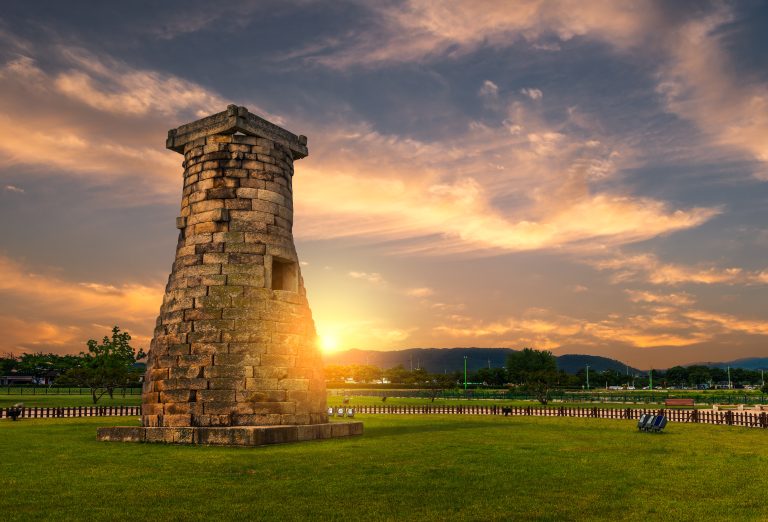
Day Seven: Timeless Beauty of Gyeongju
After breakfast, drive south to Gyeongju, the ancient capital of the Silla Kingdom. Begin at Tumuli Park, where grassy burial mounds of kings and nobles hide royal treasures underground. Visit the Cheomseongdae Observatory, the oldest in Asia, built in the 7th century for star-gazing and weather forecasting. Stroll along Hwangridan-gil, a street known for its beautiful hanoks, trendy cafés, and charming boutiques. Capture the balance of traditional and modern Korean culture. Enjoy some free time to shop, snack or relax at a teahouse. Check in to your hotel and rest before another full day of discovery.
- Breakfast Included
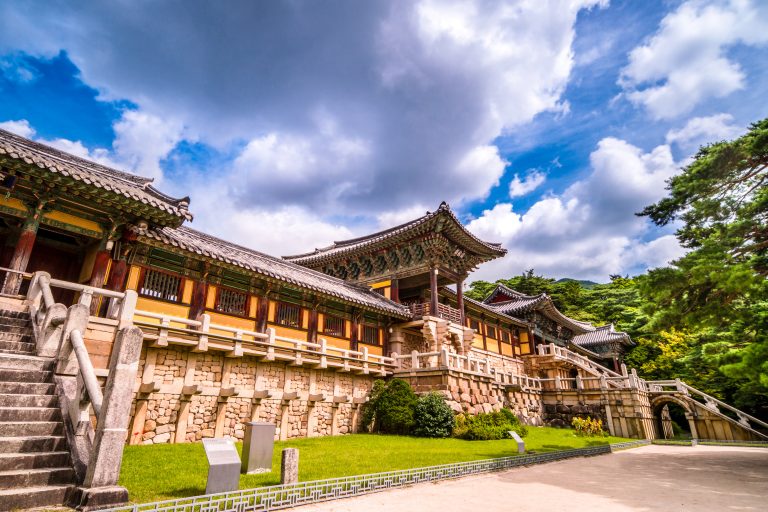
Day Eight: Temples and National Treasures
Today’s journey takes you to Bulguksa Temple, a stunning Buddhist complex and UNESCO World Heritage Site. Admire its elegant stone bridges, pagodas, and prayer halls set among pine trees. Then visit the Seokguram Grotto, a sacred site housing a seated Buddha carved from white granite, facing the East Sea. Enjoy the peaceful atmosphere and mountain scenery surrounding this ancient meditation site. Continue to Anapji Pond, a tranquil royal garden built during the Silla era. Conclude at the Gyeongju National Museum, home to gold crowns, Buddhist art, and relics from royal tombs. Return to your hotel in Gyeongju for a relaxing evening.
- Breakfast Included

Day Nine: Monasteries & Beaches
Depart Gyeongju and travel to the secluded Haeinsa Temple, one of the Three Jewel Temples of Korea and guardian of the Tripitaka Koreana woodblock scriptures. Stroll through centuries-old halls and learn about the temple's enduring legacy of scholarship and faith. Later, transfer to Busan, Korea’s second-largest city on the southern coast. Relax at the famed Haeundae Beach, a favorite spot for locals and tourists alike. The golden sand and gentle waves make for the perfect late-afternoon stroll. Check into your hotel in Busan for the night.
- Breakfast Included
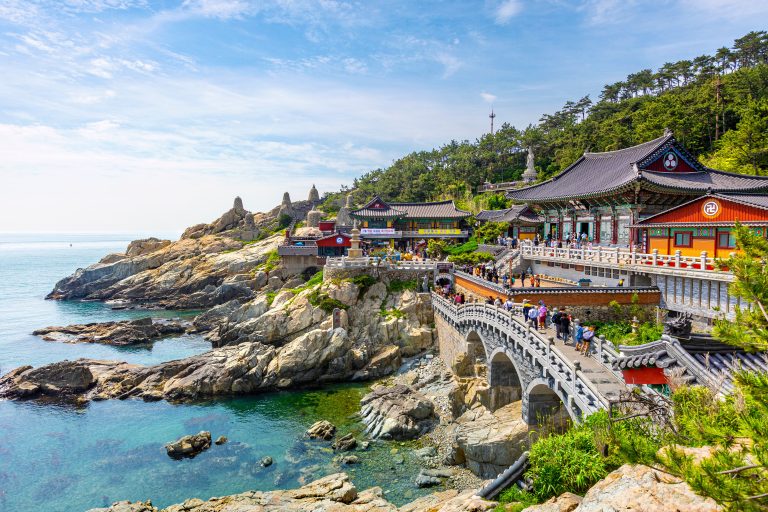
Day Ten: Vibrant Busan Adventures
Start with a visit to Haedong Yonggungsa Temple, a rare seaside temple dramatically perched on cliffs above the East Sea. Wander through the peaceful temple grounds and admire its striking ocean views. Head to the colorful, hillside Gamcheon Culture Village, known for its artistic flair and winding alleyways. Explore Gukje Market, once a hub for post-war refugees, and Jagalchi Fish Market, Korea’s largest seafood market where you can try sashimi or grilled octopus. End with a ride on the Sky Capsule, a scenic tram offering panoramic views along the Busan coast. Return to your hotel and unwind.
- Breakfast Included
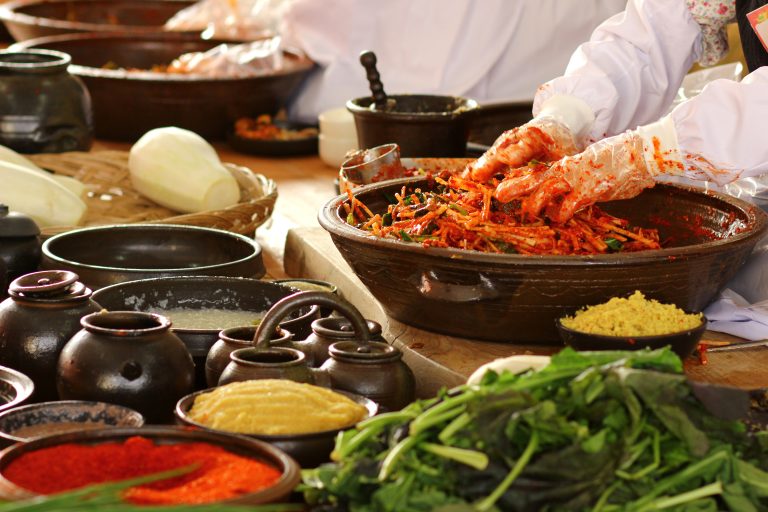
Day Eleven: Cooking & High-Speed Rail to Seoul
Check out and head to Busan Station for a scenic KTX bullet train ride back to Seoul (approx. 2.5 hrs) Upon arrival, join a hands-on Korean cooking class, where expert chefs teach you to prepare staples like bulgogi and kimchi. Learn about the cultural roots of Korean cuisine while enjoying the fruits of your labor. The class offers a fun and social environment perfect for solo travelers. Check into your Seoul hotel and spend the evening at leisure—perhaps revisit Myeongdong or explore a local café. Overnight in Seoul.
- Breakfast Included
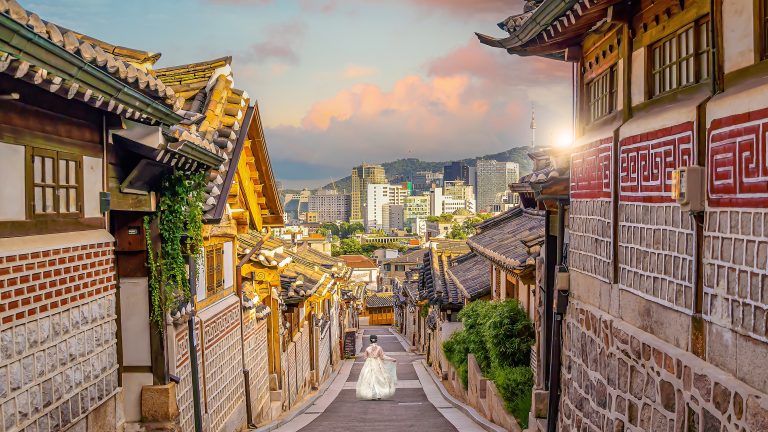
Day Twelve: Seoul’s Modern Icons & Farewell
Begin your final full day with a visit to the N Seoul Tower, a beloved city icon offering spectacular panoramic views from its mountaintop observatory. Next, explore the architectural marvel of the Dongdaemun Design Plaza (DDP), a centre for fashion, innovation, and art designed by Zaha Hadid. Spend time shopping or relaxing in Myeongdong, Seoul’s busiest district for cosmetics, fashion, and snacks. Try street food like hotteok or spicy rice cakes. Conclude the day with a memorable farewell dinner, sharing stories and laughs with your new travel companions. Overnight in Seoul.
- Breakfast & Dinner Included
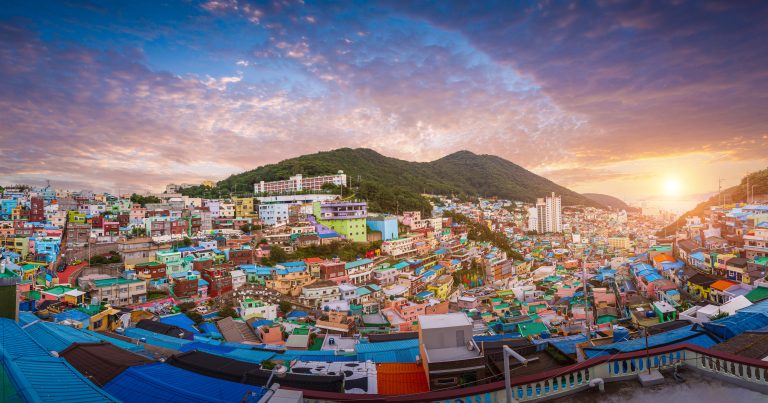
Day Thirteen: Departure from Korea
Enjoy your final breakfast in Korea and check out of your hotel. Transfer to Incheon International Airport for your flight home. Your Korean journey ends here, filled with memories of history, culture, and camaraderie.
- Breakfast Included
Accommodations
Dates & Prices
Essential Information

We recommend that you check passport and visa requirements for the country you are visiting at the State Department if you have a U.S. Passport. Most countries require that your passport have at least six months validity when traveling internationally, and many require that you have one to two blank visa pages for either an entry stamp or visa. As a general rule, please check that your passport has six months validity beyond your planned trip, and if not, please renew your passport with plenty of time to provide Solos with your updated passport information by the final payment due date.
Not sure what travel documents you need? Our trusted partner, sherpa°, makes it easy to check visa and entry requirements based on your destination and passport. One quick check now means smooth sailing later. Click here to learn more.

We recommend that you check if vaccinations are required for your destination at the CDC’s recommendations for your visited destination(s). We also recommend you purchase travel protection. A travel protection plan can often assist with medical emergencies and reimburse costs that are covered by the plan. Please verify coverage details with Solos before you travel.


- A reasonable level of fitness/mobility is required as we include plenty of sightseeing/traveling, some with early starts. Please note that on this trip we will also use private and public transport and there will be a lot of walking and standing involved.
- The order of the itinerary and events may be subject to change
- Please refer to Medical Conditions in Important Information.

-
Credit/Debit Cards are widely accepted in cities for hotels, restaurants, shops, and convenience stores.
-
Cash is useful for:
-
Small markets (e.g. Gwangjang Market)
-
Street food vendors
-
Local buses or rural areas
-
-
ATMs are common, but make sure to use ones marked “Global” or “International” for foreign cards.


Clothing Essentials
- Light Layers – Pack breathable tops (short and long sleeve), and layer with lightweight sweaters or cardigans.
- Jacket – A light waterproof jacket or windbreaker for cooler evenings and possible rain.
- Comfortable Trousers & Jeans – For long coach rides and walking tours.
- Walking Shoes or Trainers – Supportive, well-broken-in footwear is essential. Some sites involve stairs, hills, and cobblestones.
- Smart Casual Outfit – One or two outfits for evening dinners (e.g., Korean BBQ or farewell dinner).
- Scarf or Shawl – Useful for temples or changing weather.
- Socks – You'll often remove your shoes in temples and traditional houses.
- Sun Protection – Hat, sunglasses, and light long sleeves for sun-sensitive travellers.
Additional Items to Pack
- Small Backpack or Day Bag – For daily outings (water bottle, camera, sunscreen, etc.).
- Foldable Umbrella or Travel Poncho – Spring /Autumn showers are brief but possible.
- Swimsuit (Optional) – If your hotel has a spa or you’d like to visit public bathhouses (jjimjilbang).
- Reusable Water Bottle – Eco-friendly and useful for long days out.
- Travel Plug Adapter – South Korea uses Type C or F plugs, 220V.
- Prescription Medications & Toiletries – Include any essentials you may not easily find locally.
- Passport & Photocopies – For the DMZ visit, your passport is required.
Cultural Considerations
- Temple Visits – Avoid revealing clothing (e.g., sleeveless tops or shorts). Opt for trousers or a long skirt and covered shoulders.
- Shoes Off Indoors – Be prepared to remove shoes in hanoks, temples, or traditional restaurants. Slip-on shoes can be helpful.

Food plays a central role in South Korean culture and is often one of the most memorable aspects of visiting the country, particularly for those with an interest in global cuisines.
Vegetarians and vegans will generally find more options in major cities like Seoul and Busan, where international and plant-based dining is more accessible. However, in rural or less tourist-oriented areas, suitable choices can be limited and may require more planning in advance.
Please note that we may not be able to accommodate all dietary requirements, especially food allergies. If you have a serious allergy, it's essential that you let us know at the time of booking. Even with prior notification, we cannot promise a completely allergen-free environment due to potential cross-contamination in hotel or restaurant kitchens, especially in buffet settings.
South Korean cuisine frequently features ingredients such as gluten (found in many traditional dishes), nuts and nut oils, sesame seeds and sesame oil, soya (including soy sauce, tofu, and fermented bean pastes), seaweed, seafood, and eggs. These are commonly used and often difficult to avoid. Additionally, some establishments may not be familiar with allergies that are more widely recognised in Western countries and may be unwilling or unable to accommodate them.

















